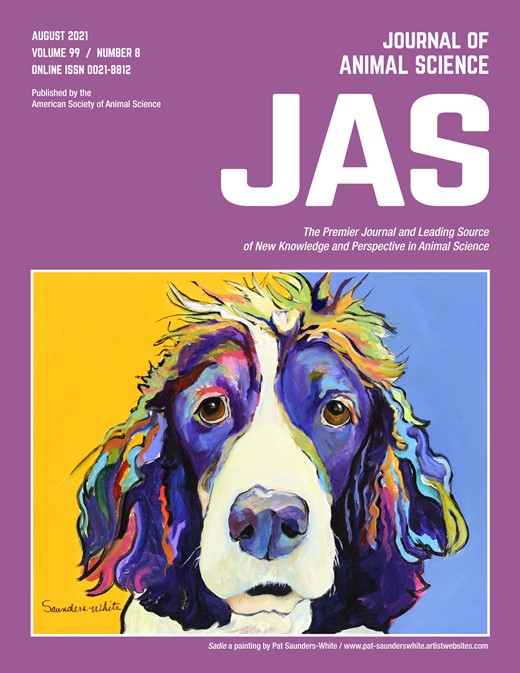Ver ítem
- xmlui.general.dspace_homeCentros Regionales y EEAsCentro Regional Tucumán - Santiago del EsteroEEA Santiago del EsteroArtículos científicosxmlui.ArtifactBrowser.ItemViewer.trail
- Inicio
- Centros Regionales y EEAs
- Centro Regional Tucumán - Santiago del Estero
- EEA Santiago del Estero
- Artículos científicos
- Ver ítem
A meta-analytical evaluation of the effects of high-salt water intake on beef cattle
Resumen
Adequate drinking water is essential to maintain acceptable production levels in beef cattle operations. In the context of global climate change, the water scarcity forecasted for the future is a growing concern and it would determine an increase in the use of poorer quality water by the agricultural sector in many parts of the world. However, consumption of high-salt water by cattle has consequences often overlooked. A meta-analysis was carried out to
[ver mas...]
Adequate drinking water is essential to maintain acceptable production levels in beef cattle operations. In the context of global climate change, the water scarcity forecasted for the future is a growing concern and it would determine an increase in the use of poorer quality water by the agricultural sector in many parts of the world. However, consumption of high-salt water by cattle has consequences often overlooked. A meta-analysis was carried out to assess the impact of utilizing high-salt water on dry matter (DMI) and water intake (WI), and performance in beef cattle. The dataset was collected from 25 studies, which were conducted between 1960 and 2020. Within the dataset, the water quality was divided into three categories according to the ratio of sulfates (SO4) or sodium chloride (NaCl) to total dissolved solids (TDS): 1) TDS = all studies included (average SO4:TDS = 0.4); 2) NaCl = considered studies in which water salinity was dominated by NaCl (average SO4:TDS = 0.1); and 3) SO4 = considered studies in which water salinity was dominated by SO4 (average SO4:TDS = 0.8). Results showed that DMI and WI were negatively affected by high-salt water consumption, although the magnitude of the effect is dependent on the type of salt dissolved in the water. There was a quadratic effect (P < 0.01) for the WI vs. TDS, WI vs. NaCl, DMI vs. TDS, and DMI vs. NaCl, and a linear effect (P < 0.01) for WI vs. SO4 and WI vs. SO4. Average daily gain (ADG) and feed efficiency (FE) were quadratically (P < 0.01) affected by high-salt water, respectively. This study revealed significant negative effects of high-salt water drinking on beef cattle WI, DMI, and performance. However, the negative effects are exacerbated when cattle drink high-sulfate water when compared with high-chloride water. To the best of our knowledge, this is the first approach to evaluate animal response to high-salt water consumption and could be included in the development of future beef cattle models to account for the impact of water quality on intake and performance. In addition, this meta-analysis highlights the need for research on management strategies to mitigate the negative effects of high-salt water in cattle.
[Cerrar]

Autor
Lopez, Agustin;
Arroquy, Jose Ignacio;
Hernandez, Olegario;
Nasca, Jose Andres;
Juárez Sequeira, Ana Verónica;
DiLorenzo, Nicolas;
Distel, Roberto Alejandro;
Fuente
Journal of Animal Science 99 (8) : skab215 (August 2021)
Fecha
2021-08
Editorial
Oxford Academic Press
ISSN
1525-3163
Formato
pdf
Tipo de documento
artículo
Palabras Claves
Derechos de acceso
Restringido
 Excepto donde se diga explicitamente, este item se publica bajo la siguiente descripción: Creative Commons Attribution-NonCommercial-ShareAlike 2.5 Unported (CC BY-NC-SA 2.5)
Excepto donde se diga explicitamente, este item se publica bajo la siguiente descripción: Creative Commons Attribution-NonCommercial-ShareAlike 2.5 Unported (CC BY-NC-SA 2.5)


